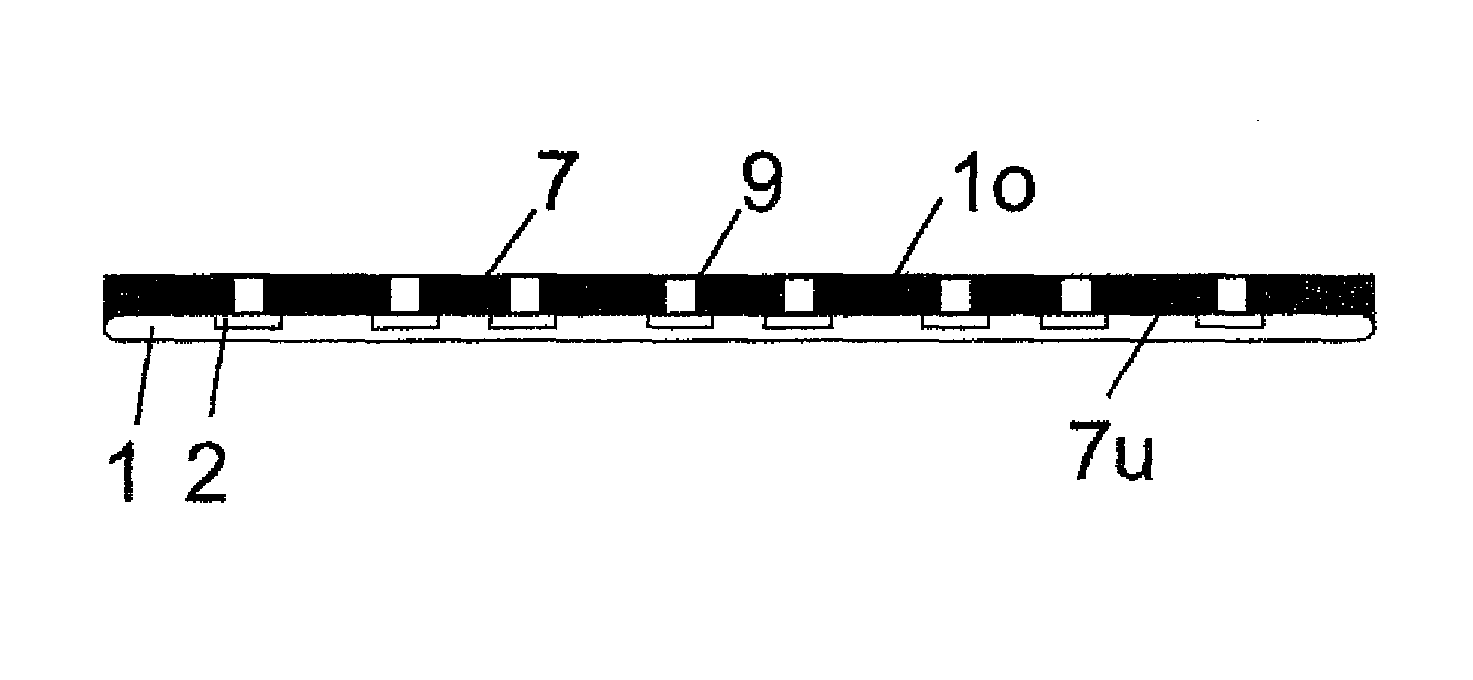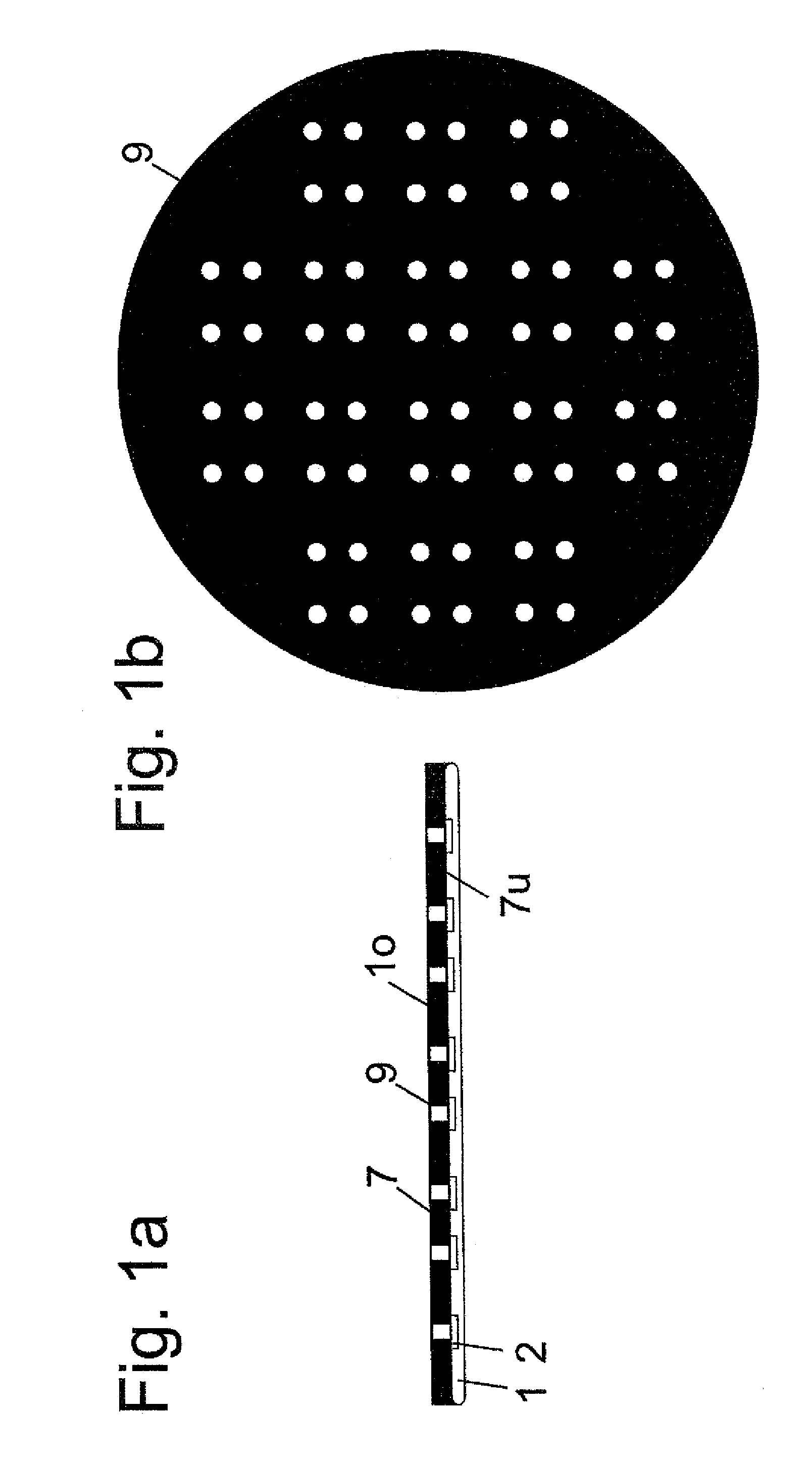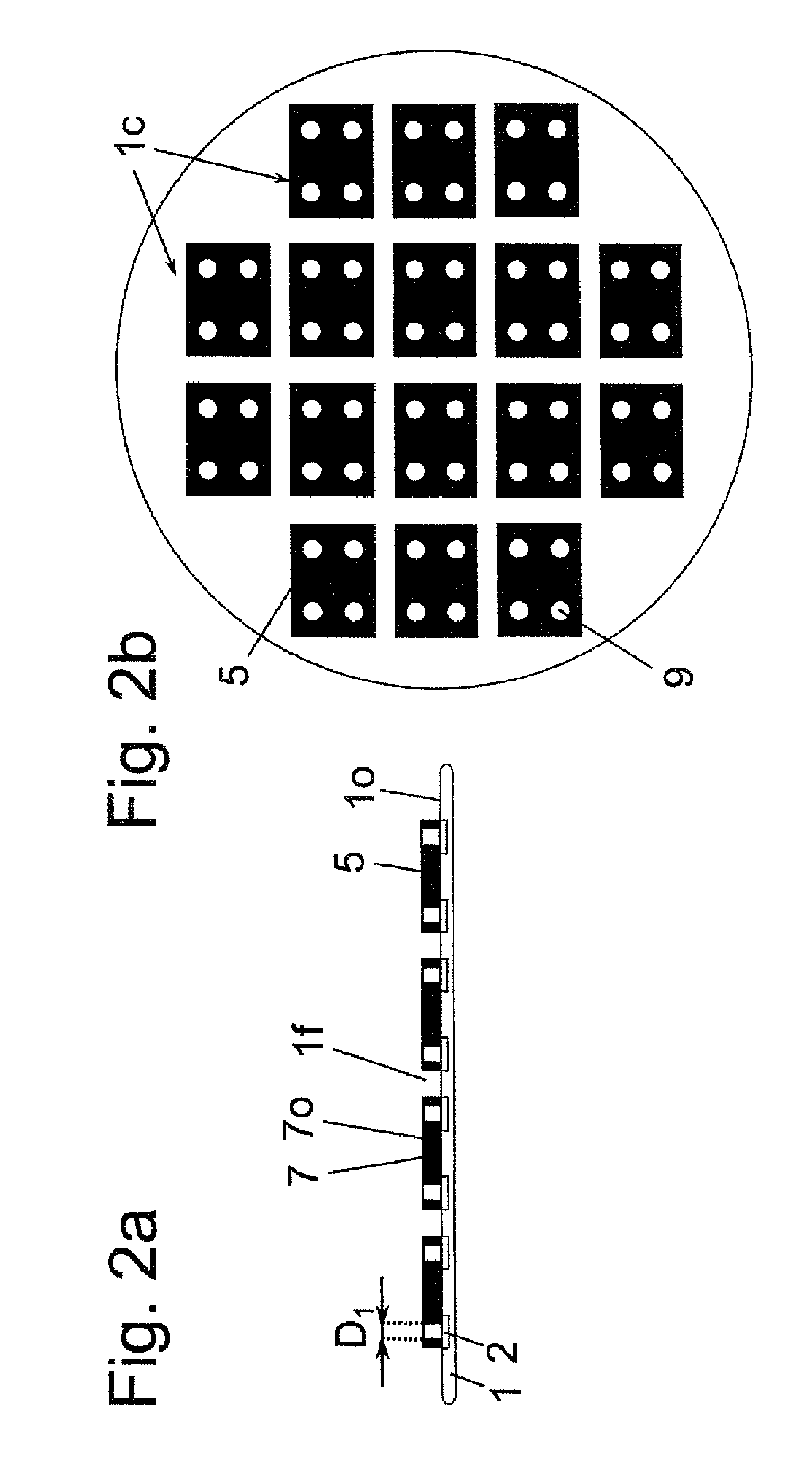Method for fastening chips with a contact element onto a substrate provided with a functional layer having openings for the chip contact elements
a contact element and functional layer technology, applied in the direction of solid-state device manufacturing, electric devices, semiconductor/solid-state device manufacturing, etc., can solve the problems of limiting the choice of materials, unable to implement the above sequence, and the electrical contact between the chips and the substrate poses technical problems, etc., to achieve improved electrical contact-making of chips, high throughput, and high alignment accuracy
- Summary
- Abstract
- Description
- Claims
- Application Information
AI Technical Summary
Benefits of technology
Problems solved by technology
Method used
Image
Examples
Embodiment Construction
[0037]In the method step which is shown in FIGS. 1a and 1b, a function layer 7 with low elasticity (therefore provided with a high modulus of elasticity) is applied to a surface 10 of the substrate. Especially spin coating, spray coating, extrusion coating, lamination, gas precipitation or similar methods are used for application. The function layer 7 is used as underfill or support material for supporting the chips 4 which are tacked onto the substrate 1 by the method of the present invention.
[0038]The function layer 7 is applied over the entire surface and is already solid or rigid upon application or at least at the end of the application process or is transferred into a solid or rigid state by phase conversion or a polymerization step. A photostructuring process uncovers (i.e., removes) the function layer 7 at the contact-making positions, at which there are contacts 2 on the surface 1o so that from one chip contact side 7o facing away from the surface 1o to the surface 1o a fre...
PUM
 Login to View More
Login to View More Abstract
Description
Claims
Application Information
 Login to View More
Login to View More - R&D
- Intellectual Property
- Life Sciences
- Materials
- Tech Scout
- Unparalleled Data Quality
- Higher Quality Content
- 60% Fewer Hallucinations
Browse by: Latest US Patents, China's latest patents, Technical Efficacy Thesaurus, Application Domain, Technology Topic, Popular Technical Reports.
© 2025 PatSnap. All rights reserved.Legal|Privacy policy|Modern Slavery Act Transparency Statement|Sitemap|About US| Contact US: help@patsnap.com



